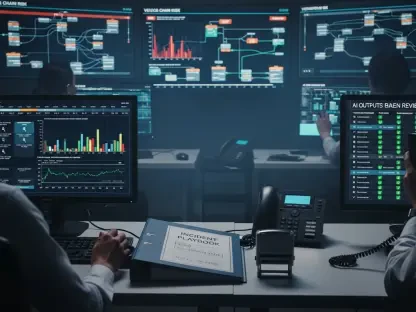The global maritime sector faces significant challenges driven by geopolitical tensions, cybersecurity threats, and evolving operational risks. Despite long-term safety advancements, complex factors such as regional conflicts, economic protectionism, and technological vulnerabilities have introduced new dimensions of risk that require careful management. Understanding these challenges, alongside emerging trends and projections, is essential for the sector to mitigate threats and maintain operational efficiency.
The Current State of Maritime Safety
The maritime industry remains a cornerstone of global commerce, facilitating approximately 90% of international trade through ocean freight. Key segments include container ships, cargo vessels, and tankers, with major players navigating an intricate framework of regulations and standards. The industry’s economic significance is underscored by its role in global trade, yet it faces evolving risks from both traditional and contemporary sources. To address these, the sector continues to leverage advanced technologies and processes, aligning with stringent regulatory requirements.
Progress in traditional safety metrics has marked a decline in incidents such as vessel losses, yet technological and geopolitical disruptions introduce a dynamic risk environment. The growing sophistication of these risks demands a proactive approach to safeguarding maritime operations. Companies must continuously adapt, enhancing their resilience to navigate an increasingly complex global landscape.
Key Trends in Maritime Safety
Technological Advancements and Market Drivers
Technological innovation plays a crucial role in shaping maritime safety and operations. Digital tools and automation have enhanced efficiency while introducing cybersecurity vulnerabilities that need addressing. Cyber threats, including ransomware and GPS interference, present substantial risks, necessitating robust protective measures.
Market dynamics, driven by evolving consumer behaviors and increased trade activities, present new opportunities for growth. While technological advancements offer avenues for efficiency and safety, they also require careful integration to ensure that strategic objectives align with security needs. The confluence of technology and market drivers creates an environment ripe for innovation and growth.
Market Data and Future Projections
Market data indicates a trend of moderate growth within the maritime industry, with projections showing sustained performance as companies adapt to geopolitical and economic shifts. Increased tariffs and trade restrictions have reshaped shipping routes and volumes, influencing market dynamics.
Looking ahead, forecasts suggest continued adaptation to these changes, offering insights into the industry’s resilience. Understanding market performance indicators and growth projections empowers stakeholders to make informed decisions, enabling strategic investments in technology and infrastructure that balance opportunities and risks.
Challenges in Maritime Safety
The maritime sector encounters multifaceted challenges characterized by technological vulnerabilities, regulatory complexities, and market uncertainties. Cyber threats, particularly ransomware attacks and GPS spoofing incidents, highlight the urgent need for comprehensive cybersecurity strategies.
Regulatory compliance further complicates the landscape, requiring adherence to international standards amid shifting geopolitical scenarios. Overcoming these challenges involves not only technical solutions but also strategic planning and international cooperation. The industry’s response calls for innovative risk management strategies and robust regulatory frameworks to mitigate potential disruptions.
Regulatory Landscape and Compliance Measures
Significant regulatory changes impact maritime operations, including updates to international shipping standards and heightened security protocols. Compliance is critical in navigating these evolving laws, with the industry investing in measures that ensure adherence to global standards.
Security measures play a vital role in safeguarding operations, with regulations demanding meticulous attention to detail. As regulatory changes continue to unfold, maintaining awareness and readiness to adapt is essential. Companies must consistently align their strategies with regulatory expectations, ensuring that operations remain compliant and secure.
Future Directions in Maritime Safety
The sector’s future will be shaped by ongoing innovation and technological advancements, as well as response strategies to geopolitical and economic shifts. Emerging technologies like autonomous vessels and advanced navigation systems present both opportunities and challenges, with potential disruptors poised to redefine traditional practices.
As the industry looks forward, understanding factors such as regulatory evolution and economic conditions becomes imperative. Strategic foresight will be necessary to harness innovation, maintain competitive advantage, and ensure sustained growth despite uncertainties. Embracing change while safeguarding fundamentals will be crucial to thriving in this dynamic environment.
Conclusion and Recommendations
The examination of maritime safety reveals a sector on the brink of transformation, where technological and geopolitical factors shape its trajectory. Notable advancements in safety measures are accompanied by rising risks, underscoring the need for vigilant adaptation. Moving beyond immediate challenges, a structured approach involving enhanced cybersecurity, regulatory compliance, and strategic foresight is essential for industry sustainability.
To capitalize on emerging opportunities, stakeholders should invest in innovation, leverage data for predictive insights, and prioritize robust security measures. By fostering a proactive safety culture and embracing technological advancements, the industry can navigate these complexities effectively, ensuring resilience and continued growth.









